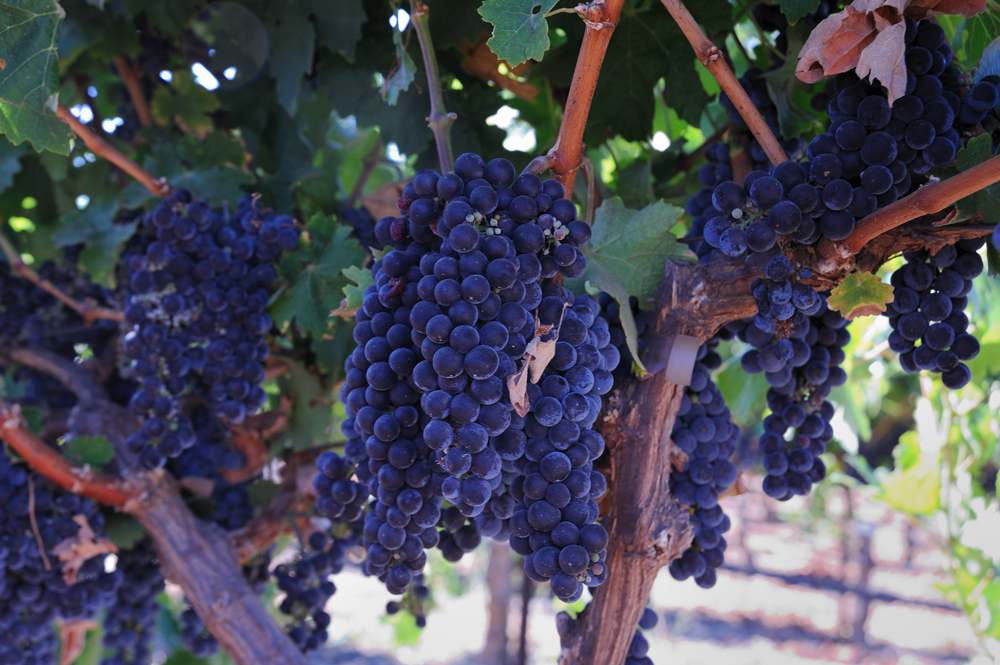
February 16 marks International Syrah Day.
Syrah, undeniably one of the grape world’s cornerstones, commands a distinguished place among the dozen most favored varieties, flourishing in vineyards across the globe. Originating from the Rhône Valley in France, Syrah reigns supreme as the primary grape in the production of North Rhône red wines.
Characterized by its deep hue, elevated tannin and pigment levels, and a medium to high acidity contingent upon its terroir, Syrah presents a versatile canvas for winemakers. In its youth, Syrah unveils a floral bouquet, transitioning with age into a symphony of white and black pepper, herbs, and occasional nuances of leather and smoke.
Wines emerging from regions with a moderate climate, such as the Rhône Valley or Walla Walla in Washington State, embody medium- to full-bodied profiles. These wines, dry and assertive, showcase prominent tannins accompanied by intricate notes of blackberry, mint, and black pepper.
Conversely, in warmer climates like McLaren Valley in Australia or California’s Barossa Valley, Syrah transforms into a full-bodied wine. Here, the tannins soften, offering a more jammy palate with notes of star anise, licorice, and even hints of chocolate, especially in the Australian Syrah.
Renowned for its elevated tannins and acidity, Syrah stands as an exemplar for wines destined for cellaring. A well-crafted Syrah demands a patient aging process of ten years or more, with each passing year enriching the wine’s profile, unraveling layers of complexity and intrigue.
Syrah’s versatility extends beyond pure varietals, playing a crucial role in crafting exceptional blended wines that showcase the grape’s multifaceted character.
Embark on a journey through the diverse landscapes of Syrah, a grape variety celebrated worldwide, with notable representations from France, Australia, and the USA.
In its French heartland, the Rhône Valley, Syrah graces the Northern Rhône’s red wines with an exclusive presence. Icons such as Hermitage, Crozes Hermitage, Cote-Rotie, Cornas, and Saint-Joseph bear witness to the prowess of Syrah. Notably, Cote-Rotie introduces a unique twist by allowing the addition of up to 20% Viognier, a white variety, to enhance the aromatic profile. Here, tradition embraces the novel approach of mixing grapes and fermenting them together, despite usual practice to blend wines. This blend now also is popular in Australia and California.
In the Southern Rhône, where Grenache holds sway, Syrah steps in to elevate the tannic structure and infuse depth and color into wines. The classic triumvirate of Grenache, Syrah, and Mourvèdre defines the blends of Southern Rhône, a composition mirrored in the United States, often referred to as GSM blends.
Venturing across the globe, Australia emerges as Syrah’s second home after the Rhône. Introduced in the 19th century, Syrah, or Shiraz as it is affectionately known in Australia, assumed a pivotal role, becoming the nation’s vinous emblem. The nomenclature shift to Shiraz aimed to render Australian wines instantly recognizable. While the term Hermitage was historically used until the 1980s, aligning with the famous wine from Northern Rhône, AOC regulations prompted a cessation of this practice. Beyond dry wines, Australia surprises with Shiraz-based Porto-style fortified wines and intriguing sparkling red wines.
In the United States, Syrah thrives in California, Washington, and Oregon, contributing to the country’s diverse wine tapestry. The allure of Syrah has also captivated Spain, Italy, South Africa, New Zealand, Chile, and Argentina, signifying its global resonance.
As you raise a glass to Syrah on International Syrah Day, navigate this rich symphony of flavors, choosing regions that align with your taste preferences, and pay homage to the nuanced brilliance of a well-crafted Syrah.